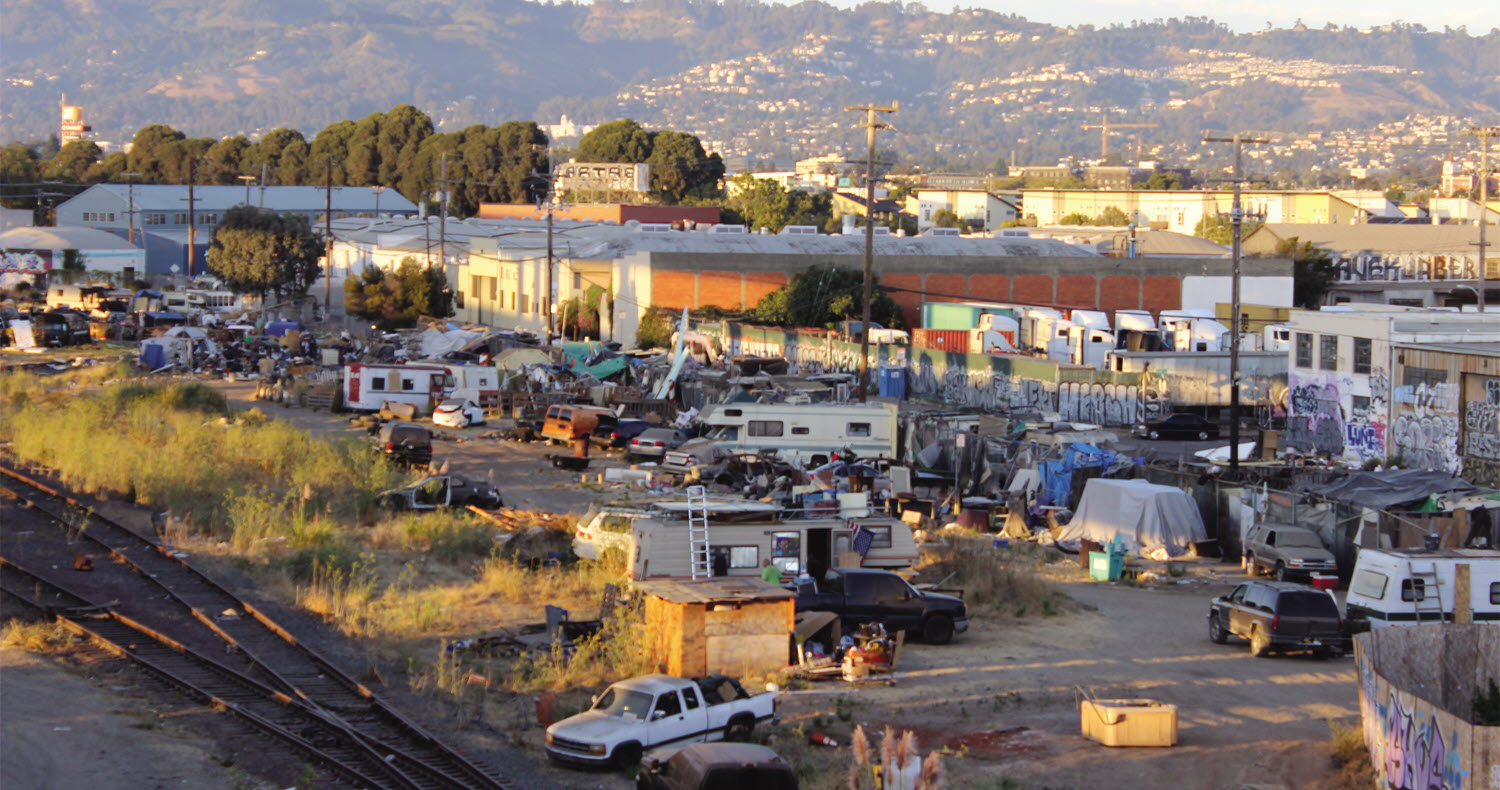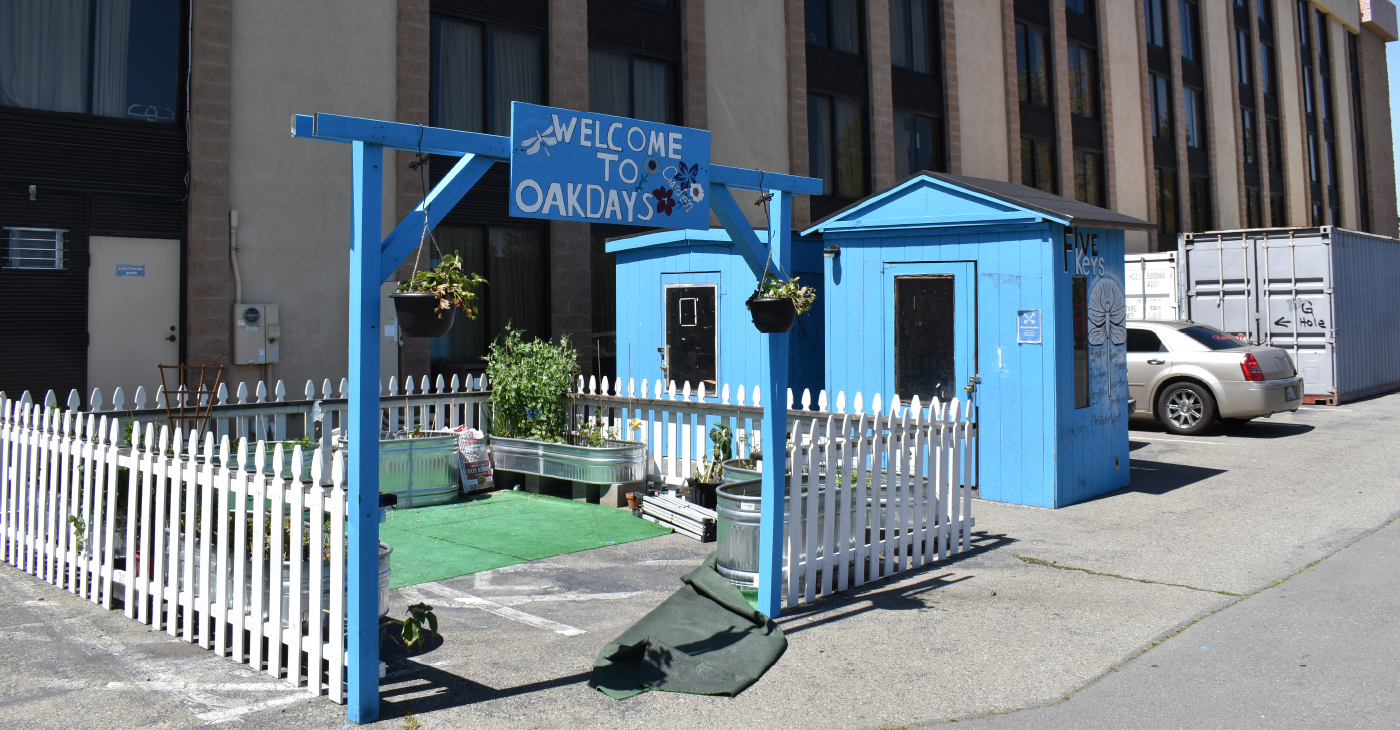Homeless
How Accurate is Our Homeless Count?

Oakland’s population of unhoused residents may be much higher than the July Point- In-Time census that showed a 47% increase over the last count in 2017.
The total of 4,071 of homeless residents made headlines, but unhoused residents, their advocates, and those who’ve studied or participated in the PIT count see its figures as an undercount.
“The PIT count is not designed to be a comprehensive analysis of the homeless population,” said Margaretta Lin, executive director of the Dellums institute and a former Oakland Deputy City Administrator. “But because it’s the only good number we have on homelessness, that number sticks in the public’s imagination.”
The PIT count has been performed every two years in Oakland since The Department of Housing and Urban Development mandated the count for all communities that receive federal funding for homelessness.
The vast majority of PIT totals come from volunteers individually counting homeless people during about three hours on one day. In Oakland, that day is January 30th, early in the morning in the middle of winter, a time when unhoused people who can find temporary shelter would be most likely to.
Alastair Boone, who participated in 2019’s PIT count and wrote about the experience in an article for CityLab, reported that about 600 volunteers and 150 guides participated in the count. She worked with one other volunteer and one guide to search through a residential area in East Oakland but she didn’t find a single homeless person.
While she attributes her inability to find homeless people in the area to the fact that she was in a relatively wealthy neighborhood, she also thinks she missed people.
“We…probably missed people who were hidden from view,” said Boone, “they were in alcoves or cars, or in the homes and apartments of friends and relatives, sleeping on couches and floors.”
The discrepancy between the total PIT count increases of unsheltered and temporarily sheltered residents also suggests that temporarily sheltered residents are especially undercounted. While PIT’s count of unsheltered homeless residents increased 59% from 3,210 to 4,071 between the 2017 and 2019 counts, its counts of sheltered homeless residents in those years remained almost exactly the same. In 2017 PIT’s total temporarily sheltered homeless count was 859; in 2019 it was 861.
According to a 2017 report by The National Law Center on Homelessness & Poverty (NLCHP), since PIT counts use the amount of filled beds in homeless shelters to measure its count of sheltered homeless residents, they can’t do an accurate measure in areas like Oakland where beds at shelters are generally filled to capacity.
“The count of sheltered homeless individuals indicates a city’s supply of shelter beds rather than the demand for shelter or housing” the NLCHP report reads.
Since the PIT count generally uses the same methodology, Margaretta Lin thinks it can be effective to measure trends and fluctuations in homeless population but she also feels more studies and alternate methods of counting should be used to get a more accurate count.
She pointed out that a 2014-2015 study conducted by Alameda County’s Healthcare for the Homeless (ACHCH) found that 18,000 people were homeless while the 2015 PIT summary counted just 4,040.
ACHCH’s count was determined by measuring how many homeless people used county services instead of counting homeless people on one day.
James Vann of the Homeless Advocacy Working Group (HAWG) says the organization estimates Oakland’s current homeless population at between 9,000 and 11,000. HAWG has identified 92 encampments, which they define as any group of four or more people living together unhoused, and does regular counts at them.
“Our count is a real increase from two years ago,” Vann said, “when we counted between 40 and 45 encampments.”
Bay Area
Mayor London Breed: State Awards San Francisco Over $37M for Affordable Housing
On April 30, Mayor London N. Breed announced San Francisco has been awarded more than $37.9 million in funding from the California Department of Housing and Community Development (HCD) as part of the State’s Multifamily Housing Program (MHP). The HCD loan will provide the final funding necessary for development of Casa Adelante – 1515 South Van Ness, a 168-unit affordable housing project located in San Francisco’s Mission District.

By Oakland Post Staff
On April 30, Mayor London N. Breed announced San Francisco has been awarded more than $37.9 million in funding from the California Department of Housing and Community Development (HCD) as part of the State’s Multifamily Housing Program (MHP).
The HCD loan will provide the final funding necessary for development of Casa Adelante – 1515 South Van Ness, a 168-unit affordable housing project located in San Francisco’s Mission District.
The new development at 1515 South Van Ness Ave. will provide 168 affordable homes to low-income families, formerly homeless families, and persons living with HIV earning between 25-80% of the San Francisco Area Median Income (AMI).
In addition, the project is anticipated to provide family-friendly amenities and ground floor community-serving commercial spaces that preserve the prevailing neighborhood character of the Calle 24 Latino Cultural District.
“This funding unlocks our ability to move on building affordable housing units for families in San Francisco at a crucial time. We understand the level of need for more housing that is accessible, and like the state, the city continues to face a challenging budget cycle,” said Breed. “1515 South Van Ness is a good example of what can be achieved in San Francisco when you have strong community partnerships and an unwavering commitment to deliver on critical needs for our residents.”
“From the beginning of my term as Supervisor, I have fought to bring affordable housing to 1515 South Van Ness” said Supervisor Hillary Ronen. “In the interim, the site has been utilized for homeless services and shelter, and I am thrilled that HCD has recognized the value of this development, and we are finally ready to break ground and bring 168 affordable homes to low income and formerly homeless families in the Mission.”
Owned and occupied by McMillan Electric Company until 2015, the City and County of San Francisco purchased 1515 South Van Ness Avenue in June 2019 with the intent of developing new affordable housing.
In November 2020, the San Francisco Mayor’s Office of Housing and Community Development (MOHCD) released a Multi-site Request for Qualifications (RFQ) seeking qualified developers to build affordable housing on the site, and subsequently selected Chinatown Community Development Corporation (CCDC) and Mission Economic Development Agency (MEDA) in May 2021 to develop the site.
The project is expected to begin construction in winter 2025.
“A strong, long-term push by Mission advocates to make this site 100% affordable is now paying off, with 168 family units that include services and childcare. People of color communities know what they need, and we are excited to be in partnership with a team, consisting of MEDA, CCDC, and MOHCD, that listens,” said Malcolm Yeung, Executive Director at CCDC.
“We are excited to be in partnership with CCDC, yet again, and for the opportunity to develop intergenerational affordable housing in the City’s Mission District,” said Luis Granados, executive director at MEDA.
Increasing housing affordable to lower-income and vulnerable residents is a key priority in the City’s Housing Element which calls for additional funding for affordable housing production and preservation, as well as Mayor Breed’s Housing for All Executive Directive that sets out the steps the City will take to meet the bold goal of allowing for 82,000 new homes to be built over the next eight years.
Tuesday’s funding announcement emphasizes the importance of regional and state collaboration in order to reach our housing and climate goals.
“We are thrilled—not just to bring a project of this size to a community with great need — but to do so with community-based developers and their partners who understand the neighborhood and sensitivities around cultural preservation,” said HCD Director Gustavo Velasquez.
Alameda County
An Oakland Homeless Shelter Is Showing How a Housing and Healthcare First Approach Can Work: Part 1
Hundreds of tents and abandoned vehicles now dot major streets and neighborhoods of the Bay Area. Unfortunately, this problem is expected to worsen as the housing market skyrockets and the cost of living becomes unattainable for most Americans.

By Magaly Muñoz
Hundreds of tents and abandoned vehicles now dot major streets and neighborhoods of the Bay Area. Unfortunately, this problem is expected to worsen as the housing market skyrockets and the cost of living becomes unattainable for most Americans.
As one of California’s biggest public policy challenges, over the past four years, the state has allocated nearly $20 billion to housing and homelessness initiatives. Despite this substantial investment, the issue does not seem to be easing. Instead, the number of people without stable housing is surging.
A 2022 Point In Time (PIT) Count showed that there were 9,747 homeless individuals living on the streets in Alameda County, an almost 22% increase from the 2019 count of 8,022 homeless individuals. Many reports estimate that this number will rise once the 2024 data is released.
Amongst the many initiatives to end homelessness, the 2016 Senate Bill 1380 established California as a “housing first” state that would provide assistance, programs and funding to those experiencing homelessness. The bill recognized that the evidence-based model of prioritizing housing could end all types of homelessness and is the most effective approach to ending chronic homelessness.
In the years following the passage of the law, doctors, county officials and a community organization came together to create a first of its kind shelter to combat homelessness with housing and healthcare: the Oak Days shelter. Located in the Hegenberger corridor of Oakland, this facility, once a Days Hotel, now houses 60 individuals, some who are medically fragile.
As local counties navigated how to isolate people during the start of the COVID-19 pandemic in 2020, the state obtained federal funding to begin Project Roomkey, an initiative providing non-congregate shelter options, such as hotels and motels for people experiencing homelessness, to protect life and minimize strain on the healthcare system.
Dr. Alexis Chettiar, a medical director in Alameda County, witnessed firsthand how the coronavirus disease took over the lives of the most vulnerable populations who were too sick to remain stable unless they had hands-on supportive health care and permanent housing.
She also noticed a trend of medically vulnerable individuals with psychiatric illnesses or substance abuse issues being expelled from nursing homes, often ending up in encampments or unsheltered conditions.
This observation would inspire her, along with fellow medical director Catherine Hayes, to start Cardea Health, supported by county funding.
“What we really wanted to do was to be able to layer on the medical services to a permanent supportive housing environment so that people could age in place, they could stay there, no matter how their care needs change over time. They could stay there through the end of their life,” Chettiar said.
Cardea Health provides medical and personal care for almost 60 patients across two sites. One of these sites is an Old Comfort Inn that was also transformed into a shelter for those experiencing homelessness and chronic illnesses. The medical team assists with tasks such as injecting insulin, administering dialysis, helping patients use the restroom or get dressed.
Chettiar shared that she’s seen people as young as 40 years old with health-related issues mimicking that of an 80-year-old. Some individuals had untreated wounds that led to infections or chronic illnesses that went untreated for years, leading to immense suffering before they were able to receive medical attention.
The harsh conditions of living on the streets have exacerbated what could’ve been manageable situations, into a full-blown health crisis that ultimately put them on the priority list for Cardea’s health assistance.
UCSF Benioff Homelessness and Housing Initiative conducted a survey of 3,200 people to study who is experiencing homelessness, how they became homeless, what their experiences are and what is preventing them from exiting homelessness.
Data from those surveys showed that 45% of those experiencing homelessness reported poor or fair health and 60% reported having a chronic illness. Participants also reported that being homeless worsened their physical and mental health.
Of those experiencing health problems, 23% couldn’t access necessary healthcare in the prior six months. Additionally, 38% visited emergency departments without hospitalization and 21% reported a hospitalization for a physical health concern.
Chettiar stated that the work at Cardea is intended to reduce hospital visits for those living on the streets, providing essential care where it’s needed most.
California Black Media
Audit: California Is Poorly Monitoring Homelessness Spending
California has failed to monitor state spending and evaluate the outcomes of homelessness programs, according to a report issued last week by the California State Auditor’s Office. California State Auditor Grant Parks urged Governor Gavin Newsom to continue to hold local governments accountable in an open letter dated April 9. The audit highlighted that tracking programs and collecting accurate data could help the state save money.

By California Black Media
California has failed to monitor state spending and evaluate the outcomes of homelessness programs, according to a report issued last week by the California State Auditor’s Office.
California State Auditor Grant Parks urged Governor Gavin Newsom to continue to hold local governments accountable in an open letter dated April 9. The audit highlighted that tracking programs and collecting accurate data could help the state save money.
“The state must do more to assess the cost-effectiveness of its homelessness programs,” Parks said.
The report showed that California spent approximately $20 billion on programs and initiatives addressing homelessness in the past five years. Although state funds were allocated to fund shelters and subsidized rent, homelessness in the state increased by 65 during the last year.
In 2021, Gov. Newsom signed a law that required organizations that received state funds to collect data and evaluate the progress of programs they implement.
California auditors revealed that only two out of five action plans were cost-effective. One was Project Homekey, which converted hotels into housing during COVID-19, and CalWORKS, a housing support that offered financial assistance to low-income residents.
Lawmakers on both sides of the aisle expressed concern after the report was released.
“The biggest conclusion that the auditors came back with is there’s just inadequate transparency and data and information available,” said Sen. Dave Cortese (D-San Jose) in a statement.
Republican Sen. Roger Niello (R-Roseville) said, “These audit results are a wake-up call for a shift towards solutions that prioritize self-sufficiency and cost-effectiveness.”
-

 Community3 weeks ago
Community3 weeks agoFinancial Assistance Bill for Descendants of Enslaved Persons to Help Them Purchase, Own, or Maintain a Home
-

 Activism4 weeks ago
Activism4 weeks agoOakland Post: Week of April 3 – 6, 2024
-

 Business3 weeks ago
Business3 weeks agoV.P. Kamala Harris: Americans With Criminal Records Will Soon Be Eligible for SBA Loans
-

 Activism3 weeks ago
Activism3 weeks agoOakland Post: Week of April 10 – 16, 2024
-

 Community3 weeks ago
Community3 weeks agoAG Bonta Says Oakland School Leaders Should Comply with State Laws to Avoid ‘Disparate Harm’ When Closing or Merging Schools
-

 Community2 weeks ago
Community2 weeks agoOakland WNBA Player to be Inducted Into Hall of Fame
-

 Community2 weeks ago
Community2 weeks agoRichmond Nonprofit Helps Ex-Felons Get Back on Their Feet
-

 Community2 weeks ago
Community2 weeks agoRPAL to Rename Technology Center for Retired Police Captain Arthur Lee Johnson












































